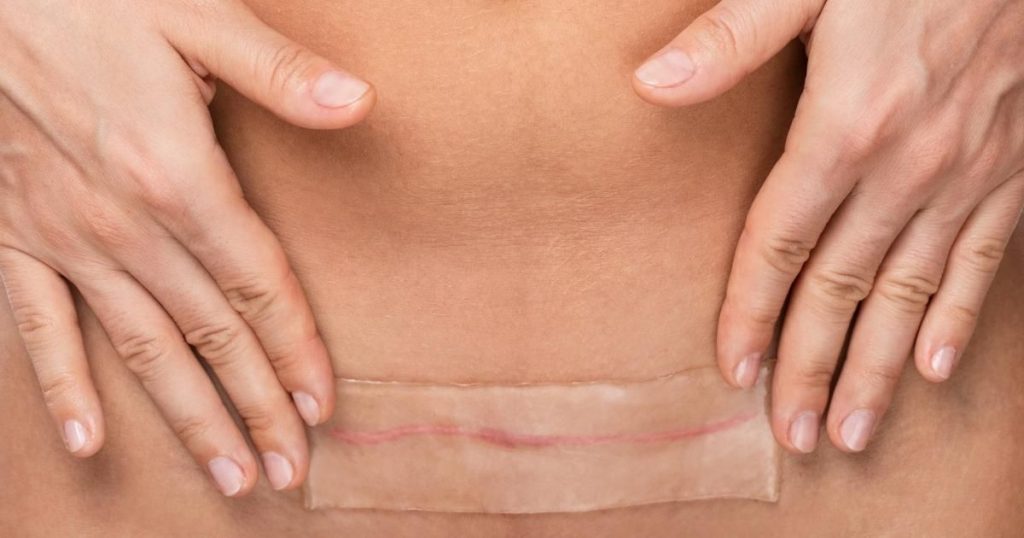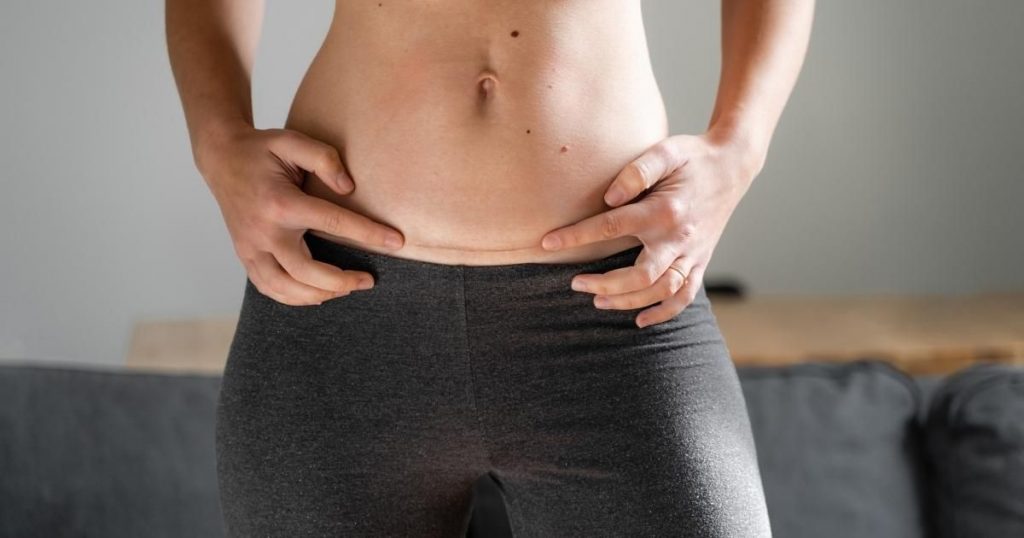The abdominal wall muscles are tightened, and the excess skin and fat on the abdomen are removed through a tummy tuck or abdominoplasty. This procedure is highly beneficial for individuals who have undergone significant weight loss, pregnancy, or ageing and are left with loose, sagging skin around their abdomen.
However, as with any surgical procedure, a tummy tuck can result in noticeable scarring. These scars vary in size and visibility based on the surgical technique, the patient’s healing process, and postoperative care.
What is Scar Revision for Tummy Tuck?
Scar revision surgery is a specialised procedure to improve the appearance and texture of scars. In the context of tummy tuck scars, this procedure can significantly enhance the aesthetic outcome of the original surgery.
Scar revision for tummy tuck can involve various techniques, including surgical removal, laser therapy, or injections, each tailored to the individual’s specific scar characteristics and personal needs.
Book A Consultation With Dr Shehzadi Tasneem
Top-rated Plastic Surgeon For Scar revision in Dubai
Installment Plan Available
Preparation and Recovery for Tummy Tuck
Tummy tuck surgery, or abdominoplasty, often leaves a scar. You can minimise its visibility by taking proactive measures. Preoperative measures are just as critical, if not more so, as what you do during recovery to influence the scar’s appearance.
In preparation for the procedure, bear in mind the following:
- Surgeon selection: Thoroughly review the portfolio of potential surgeons to evaluate their skill set and typical results. Opt for a reputable surgeon with whom you’re comfortable.
- Discuss scarring: Before the surgery, have an open conversation with your surgeon about potential scarring. Address any specific concerns and establish realistic expectations about the likely scar appearance, which may vary depending on the surgery.
- Plan your scar placement: Consider bringing underwear or bikini bottoms to your surgical planning appointment to discuss the probable location of the scar relative to your panty line.
- Quit smoking: Completely stop smoking at least six weeks before your surgery to reduce potential complications.
Post-surgical care is vital

It is crucial to provide post-operative care to ensure optimal recovery and minimise the risk of complications.
- Follow aftercare instructions: Heed all the post-operative instructions provided by your surgeon.
- Early mobility: Begin walking immediately after the surgery to decrease swelling and the risk of blood clots.
- Stay smoke-free: Refraining from smoking for at least six weeks post-surgery.
- Healthy diet: Ensure your diet includes sufficient fluids and fresh produce.
- Limit physical strain: Avoid lifting heavy items and engaging in strenuous activities for at least six weeks.
- Avoid strain on the abdomen: Keep from activities that stretch, bend, or exert pressure on your abdomen.
- Pause sexual activity: Refrain from sexual activity for three weeks post-surgery.
Scar Management and Possible Treatments
Topical vitamin E application, in its 100% pure oil form, can improve scar appearance and maintain moisture. During the first few months, apply it daily while using it to massage the scar tissue after it has healed. Discontinue use if any skin irritation or allergic reaction occurs.
Precautions include:
- Sunscreen application: Apply sunscreen to your scar for at least a year post-surgery. Using a scar-specific formula with SPF 30 or higher can prevent the darkening of the scar relative to the surrounding skin.
- Scar cleanliness: Clean the incision daily. Keeping the scar clean reduces its appearance and lowers the risk of infection.
Look out for infection signs like:
- Excessive bleeding along the incision
- Worsening swelling, bruising, or redness
- Unmanageable pain
- Yellowish or greenish incision drainage
- Foul-smelling discharge
- Loss of feeling or motion
- High temperature or fever
What you can do if you still experience scarring

If you still notice significant scarring after the healing period (around 12 weeks, but can be up to a year), there are several options to consider:
Steroid Applications and Injections
You can use steroid applications or injections to diminish raised, thick, or red scars. These treatments can be applied during surgery to prevent scarring or initiated four weeks after surgery for correction. Treatments will depend on the size and severity of the scar, typically costing a few hundred dollars per session.
Laser Treatment
Another alternative is laser treatment. Vascular lasers target and collapse the tiny blood vessels responsible for redness on the skin’s surface. Laser surfacing is highly effective in improving the texture and colour of scars. This technology resurfaces the skin by replacing scarred tissue with healthy collagen, improving texture and colour.
Consult your doctor to determine the appropriate waiting period before starting laser treatment. Laser treatment is usually expensive, requiring two to four sessions spread out over several months.
Surgical Scar Revision

If you desire a scar that closely matches the tone and texture of your normal skin, scar revision surgery is an option. Your doctor may employ a combination of topical treatments, minimally invasive procedures, and surgical revision. Scars will still be visible, but they will appear less prominent.
Like laser treatment, you should consult your doctor regarding the waiting period after your tummy tuck before undergoing scar revision surgery. They may recommend waiting at least a year to observe the healing progress of your scar. The costs associated with this procedure can vary.
Punch Grafts
Punch grafting involves creating a small hole in the skin using a specialised tool. The scar is removed and replaced with new skin typically sourced from behind your ear. Although a scar will remain, it will be smoother and less noticeable.
Embarking on the journey towards scar revision requires careful consideration, expert advice, and a strong partnership with an experienced surgeon. Dr Shehzadi Tasneem Sultan is not just a leading figure in scar revision surgery but a compassionate and understanding professional dedicated to helping you achieve your aesthetic goals.
Our goal is to connect with individuals whose journey is unique. Book a consultation with Dr Sultan today to explore your scar revision options in-depth, understand the potential benefits and outcomes, and create a customised treatment plan tailored to your needs.
Remember, the decision to undergo scar revision surgery is not about erasing your past but enhancing your future. Let Dr Sultan help you navigate this transformative journey towards improved confidence and satisfaction in your own skin.
Act now to start your scar revision journey. Remember, a clearer, more confident you is just a consultation away.












